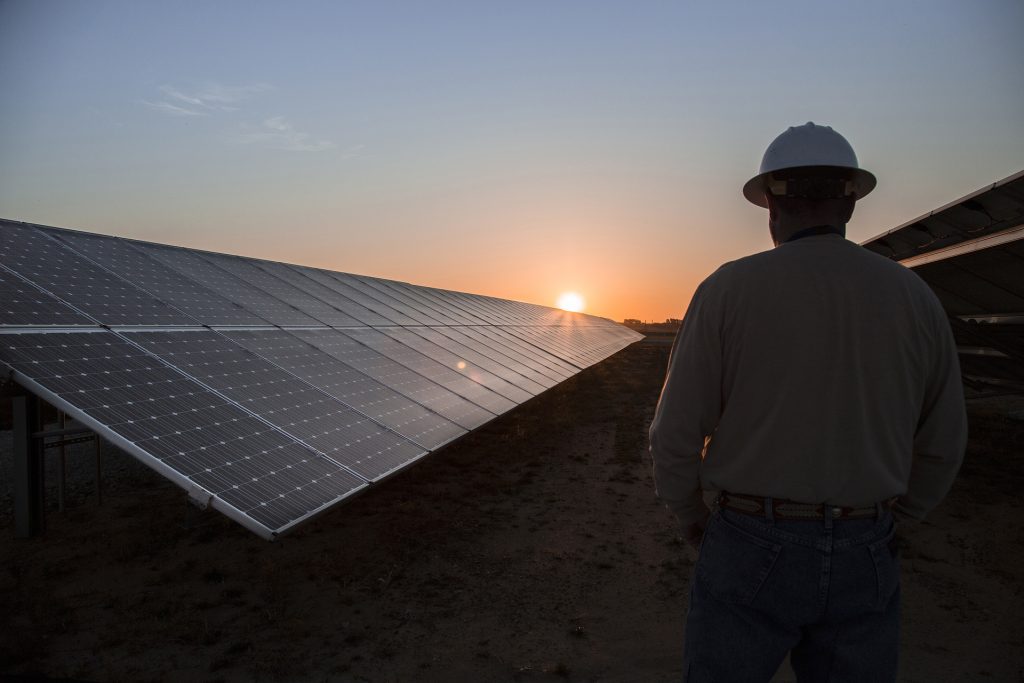The Impact of Solar PV Energy Installations
Impact of Solar PV Energy Installations
There are three main types of solar PV energy use in the US: residential, commercial, and utility scale. Each of the three types of solar energy generating systems has grown dramatically in the last two decades. Residential and commercial systems primarily use roof top solar panel installations to generate operating power for the properties they cap. This application keeps the solar PV energy installations footprint small, since they use space already claimed for operating the property.
Residential and Small Commercial Solar Installation Benefits

Original public domain image from Flickr
Residential and commercial rooftop solar energy systems, when installed by Plymouth Minnesota firm Renewable Solar Resources, reliably produce power for decades. The benefits have been proven for decades too. Rooftop solar PV energy installations quietly and consistently produce electricity every day. In fact, homeowners sometimes selloff overproduction of energy generated during summer sun exposure and buy power back at night or in winter.
Others choose to have systems installed with battery storage units to save the power generated during best hours. The power is then drawn for use after production hours. Either way, the homeowner begins making back their investments, and breakeven with installation costs in about eight years on average. During operation, there is nearly zero carbon emissions and the operation itself is incredibly quiet.
Whether you choose power storage or net metering plan, residential or commercial PV installations have an overall positive environmental impact. You are using land that is already converted for residential or commercial use and then adding an emissions saving feature. Some feel the negative impact of utility scale solar PV energy installations is much greater.
Utility Scale Solar PV Energy Installations
Recently, the benefit of utility scale solar projects has come into question. Carbon emissions savings isn’t the issue, but environmental impact is. To install a utility scale Solar PV energy generation system takes a lot of acreage. Add to that, utility scale Solar projects are growing at an annual rate of 42% since 2010. That may explain why groups have become concerned about the expansion of utility scale solar PV.
In fact, in 2022, utility scale solar installations are projected to grow more than wind energy for the first time. The US Department of Energy (DOE) is listening. DOE is funding research on the impact of Utility Scale Solar Sites. The purpose of the DOE Solar Energy Technologies Office (SETO) funded research is to reduce the cost and impact of Utility scale solar sites. Some of the answers may actually solve pre-existing unrelated challenges.
Installations in Brownfields?
Brownfields are sites that are so contaminated by the prior use, that the EPS prohibits building and development as is. Examples include industrial land contaminated by substances like petroleum products, solvents, landfills, and other hazardous chemicals. By locating the solar panels over brownfields, utilities are unlikely to displace as much wildlife. Meanwhile, utilities are using land that with limited opportunities for use.
Solar PV Energy Installations and Agriculture
Co-locating agriculture and solar is nicknamed “agrivoltaics”. SETO funded research names crop production, livestock grazing and/or pollinator habitat under or next to solar panels as agrivoltaics. Research is still pending ion 29 sites across the country, but it seems crops are happy under solar panels. They still get sufficient sunlight, and in high heat areas like the southwest desert areas, are protected from damaging sun.
Installations Benefits Some Crops
Research revealed yields of Arizona crops grown under solar panels produced 300 percent more than crops grown in traditional fields. Also, the need for crop irrigation dropped by half for some crop types. Solar panels in those same fields enjoyed a 2 percent increase in performance.
PV Energy Installations Benefit Pollinator Habitats
In Minnesota, pollinator habitats under PV panels meant 3 times more beneficial plant species. There were a 400 percent increase in pollinator insects and a higher energy output from the PV panels. Since less mowing was needed at the solar facilities, operation and maintenance costs went down. Other states are developing 150 solar facility/pollinator habitats, but those sites have smaller solar production facilities.
MN Solar PV Energy Installations
If you’re In Minnesota, and interested in a transition to solar energy, family run Renewable Solar Resources is available to answer your questions. Renewable Solar Resources believes in a clean energy future and has found solar to be an incredibly reliable energy source. Solar panels, micro-inverters and solar storage continue to grow more efficient, making solar an extremely affordable choice for your installation.
